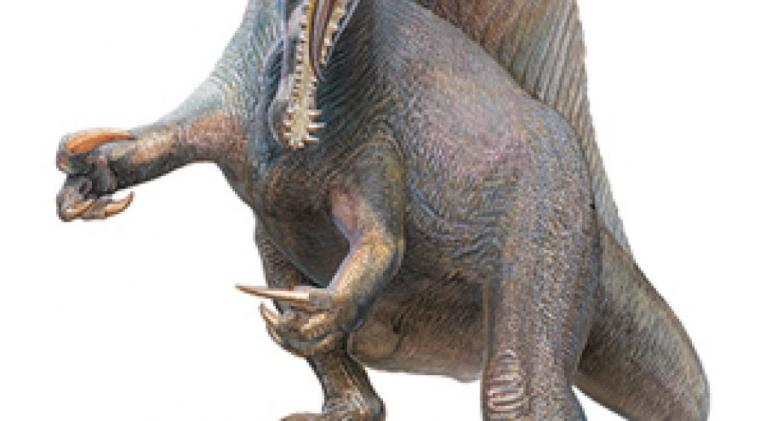Accidental discovery of blood, collagen in dinosaur bones could rewrite textbooks
especiales

The red blood cells and collagen fibers were discovered by chance when Imperial College London’s Sergio Bertazzo and Susannah Maidment were examining the buildup of calcium in human blood vessels. Bertazzo wanted to perform a few tests using electronic microscopes and ended up asking the Natural History Museum for some fossils to test his findings, according to the IB Times.
They received eight pieces, all estimated at 75 million years old.
What the pair found could prove we’ve consistently been looking at dinosaurs in the wrong way: it suggests that nearly every fossil science studied in the past century could contain similarly well-preserved blood and tissue samples, answering questions on dinosaur evolution, physiology, behavior, and whether their DNA could also be intact. From there on in, we’re entering sci-fi territory.
The accompanying study was publishedpublished in the journal Nature Communications.
Most of the fossils studied by the pair were very poorly-preserved fragments, including toes and claws from what could be several different species.
While collagen – the protein that helps form skin – had previously been found in a very well-preserved bone, finding it together with blood cells in a shabby one is remarkable, according to Maidment and Bertazzo. It means we could go about re-examining every bone in the museum and come up with potentially ground-breaking findings that enable us to understand how creatures lived in prehistoric times.
“One morning, I turned on the microscope, increased the magnification, and thought ‘wait - that looks like blood!’” Bertazzo said, according to the Guardian. He had already been examining the fragments for months.
At first, the two scientists thought it might have been contamination from a museum worker with a cut on their finger. But mammal blood cells don’t contain nuclei, while these blood cells did. This fact ruled out human blood.

"I thought there must be another explanation. That it was bacteria, or pollen or modern contamination. We went into it with a great deal of skepticism then attempted to eliminate every other possibly hypothesis there could possibly be,” Maidment told the IB Times.
Similar to the discovery of blood, the pair found amino acids that make up collagen, embedded inside the bone fragments. Its presence could be used to identify previously unknown specimens, unraveling whole dinosaur family trees.
Blood has its own set of secrets. The scientists believe its discovery in the fossils to be the first step towards understanding whether dinosaurs were cold, or warm-blooded, and when the switch began to occur and why.
"I think one of the key things from the blood cells is that there's a very well constrained relationship to do with metabolic rate and blood cells size among vertebrates," Maidment explained. "Within specific vertebrate groups, the smaller the blood cells the faster the metabolic rate. Animals with a faster metabolic rate tend to be warm-blooded, whereas those with a slow metabolic rate tend to be cold-blooded.
"The ancestors of dinosaurs are thought to have been cold-blooded animals, while birds' descendants are warm-blooded, so somewhere along that evolutionary lineage, from proto-dinosaurs up through to birds, you've got the evolution of warm-bloodedness,” she continued.
"That's been a subject of interest among paleontologists for some time because if they were warm-blooded that gives you the idea that these are very active, very bird-like animals. And perhaps much more bird-like than they were reptilian. If they were cold-blooded that gives us more this reptilian idea of their behavior, their habits and lifestyles."
READ MORE: New human ancestor: Scientists discover Lucy's relative
It’s time now for more detailed studies, the pair says. “It may well be that this type of tissue is preserved far more commonly than we thought. It might even be the norm,” said Maidment, as cited by the Guardian. “This is just the first step in this research.”
Bertazzo believes the discovery “opens up the possibility of loads of specimens that may have soft tissue preserved in them, but the problem with DNA is that even if you find it, it won’t be intact. It’s possible you could find fragments, but to find more than that? Who knows?”















Add new comment